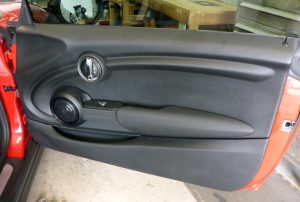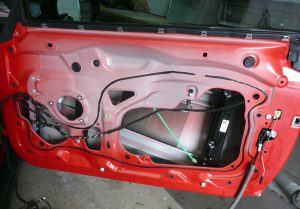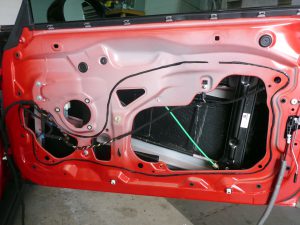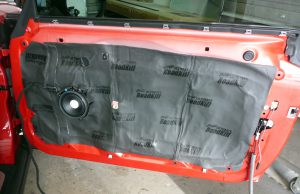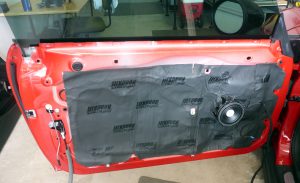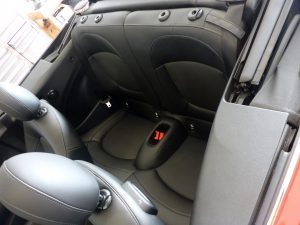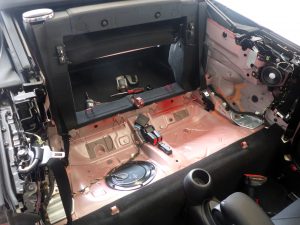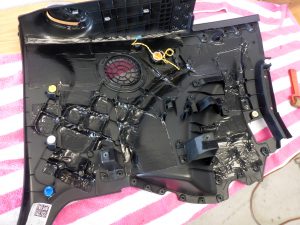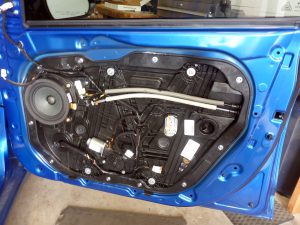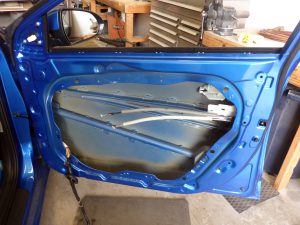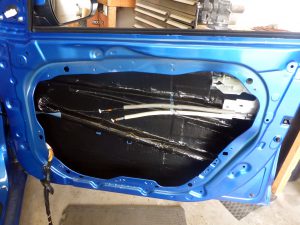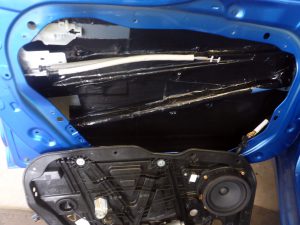2017 Mini Cooper Build Logs
Let’s talk about how loud cars are nowadays, shall we!
And I don’t mean muscle cars, no no, I mean economical cars. Most of the cars rolling off the assembly line in the last decade have been using thinner sheet metal for panel construction and cheaper lighter plastic interiors. This reduces the cost of production (you had a budget when you bought that new car, didn’t you?) and also theoretically increases fuel efficiency.
There is a downside to this trend though: NOISE! Road noise invading the cabin is at an all time high which increases driver fatigue. Thin flimsy door panels also act very poorly as speaker enclosures introducing unwanted vibrations and audio distortion.
The solution to these problems is called “sound deadening” or “sound damping”. “Sound dampening” is a misnomer and is not the appropriate term. We aren’t getting vehicles damp with moisture!
I’m making this post about two vehicles because they both shared the same solution despite the customers presenting two distinctly different problems for me to solve.
The 2017 Mini Cooper first:
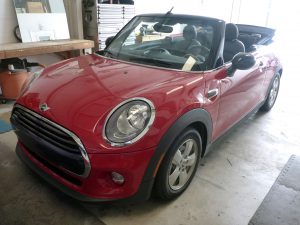
Client complained about buzzing / rattling / vibration in her brand new Cooper when she listened to her music loudly. Multiple trips to the dealership had resulted in weeks without her car and the dealership replacing the speakers (unnecessarily, I’m sure) twice. It’s a shame that a dealership simply doesn’t have the resources available to say “yup, our cars are built super cheaply and are going to rattle by design when you turn up your music”. Frustrated with the lack of results from the dealership, she reached out to a mutual friend for whom I had created a headlight build. I assured her that I could provide an effective solution and solve her problem.
The worst culprits of unwanted noise generation were the front doors. The plastic door panel pieces were lightweight and rubbed against vinyl trim which is a notorious squeak-maker. The outer door skin was thin sheet metal allowing resonance and reflection in all of the worst ways. No worries, this can be addressed rather easily. First step is always disassembly:
The other door skin gets coated with HushMat. There are plenty of sound damping products out there on the market and I’m not going to get into the debate as to which one is the best. I prefer HushMat because it is OEM-Approved and is the only deadener manufactured in the US. It’s essentially a rubber-butyl material with a thin aluminum backing that is rolled onto the surface you are trying to deaden.
With the outer door skin handled appropriately, I can now add a layer of Stinger Roadkill Ultimate to the inner door skin. It has the same layer of aluminum-coated-butyl as the HushMat but also a secondary layer of 1/8″ foam all in one product. This stuff is awesome at eliminating vibrations and rattles and, in this application, will isolate the rear speaker waves which will improve acoustic accuracy.
It should be mentioned that the treatment documented here would be the same if the objective was just to improve the performance of the existing audio system. And that result was certainly attained! As mentioned earlier though, the objective was to eliminate rattles. Upon reassembly of the door panel, every piece of plastic was lined with appropriate cloth tape in order to prevent material interface noises. This isn’t stuff that can be photographed easily but it’s the skill and knowledge of proper application of materials that makes it effective.
With the front noises handled, it was time to address some of the nasties coming from the rear of the vehicle. Same starting point: let’s get it taken apart!
The rear was similar but different… Being a convertible top, there was no easy access to the outer vehicle skin and applying any damping material to the interior metal would have been frivolous. My attention was focused on the thin plastic panel. Some clips were damaged/missing and the interface sections between metal & plastic lacked the appropriate isolation materials. I began by adding HushMat to the panels, thus increasing the mass and reducing resonance. I replaced the necessary clips and added 1/8″ foam gasket where it was appropriate. I also had to cut out the speaker ring (OEM plastic welded!) and add a gasket in there before putting it back together to eliminate ALL the noises. This particular panel was designed with no consideration being given to vibration so it was destined to rattle.
When all was said and done, the mission had been accomplished and all unwanted noises had been eliminated. As an added bonus, road noise was reduced and midbass response was improved. Sound deadening rocks.
Coincidentally, later that same week, another vehicle arrived at my shop for sound deadening treatment: a 2018 Hyundai Elantra. Client was complaining about excessive road noise. Yup, I can solve that. The most cost effective way to reduce road noise is to treat the outer door skin of the front door panels. A significant portion of road noise heard by the driver is generated by the front tires and transferred through the fenders to the front doors and then into the cabin. Front doors are quick and easy to disassemble resulting in a low labor rate. Obviously, more damping material throughout the vehicle offers a more impactful result but, when budget is a primary concern, front doors is always the answer.
This style of door panel uses a window regulator assembly inner door skin. These give great access to outer door skins for acoustical treatment but don’t benefit significantly from damping themselves since they are quite solid. This style also requires removal of the window glass which I find enjoyable. Why? Because I’m weird like that.
And that’s my blurb about sound deadening. I used to do a TON of this stuff back in the day and I miss it. Everyone tends to wince at the initial pricetag but I’ve never had anyone say it wasn’t worth the money when all was said and done. It truly is a night & day difference.

